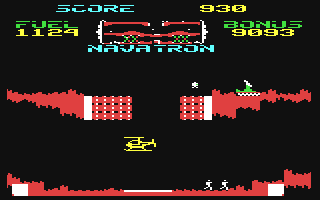Jack Tramiel (1929) founded Commodore in Canada as a typewriter-producer in 1955. During the 70s the focus of the company was shifted to other office equipment by entering the calculator-industry. When chipsuppliers like Texas Instruments started to make calculators themselves and could produce them cheaper than Commodore, Tramiel looked at computers. Commodore bought a little company called MOS for its chips. The first succesful Commodore was named PET, aimed at the business market. The VIC-20 was Commodore's entry into the consumer market.
The chip department was experimenting at this time and decided to try to develop the ideal video-game standard. This resulted in the VIC-II video chip and the legendary SID-sound chip. This was the first soundchip with more than one channel and it could sound like a human voice. There are still many sites which celebrate the music of this chip.
In 1982 the Commodore 64 was introduced. It was much cheaper than its US competitors (in 1982 $600, one year later $200) en could show colors on a TV-Screen. Unfortunately, to cut cost a limited OS was chosen: MS Basic 2.0. The computer was an instant hit. More than 30 million units were sold.
Tramiel went to archenemy Atari to compete with his first love. He couldn't beat the C64 though. Equiped with a (slow) 1531 tapedrive and 1541 disk drive it was efficient, had a lot of memory and allowed the user to be creative, In time, many more addons were developed, like printers, scanners and mouses. This development speeded up when Geos was developed (see below)
The were a number of successors to the C64, like the C16 with expanded Basic and the C128 with more memory and a 80-column display. None was as succesful as the original modal. In the mean time, Commodore bought the little company Amiga Inc., after a fight with atari over it and used it to develop the real successor, the Amiga
Commodore didn't fare that well afterwards. On april 29th, 1994 the company declared backrupcy and was taken over a few times. The brandname is in the hands of the Dutch company Tulip. The C64 is still produced at a number of places and an official 30-in-1-plug in your TV-Commodore joystick is in the shops
More C64 history on Commodore.Ca

